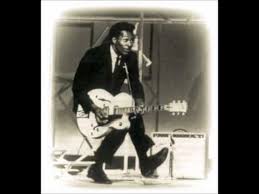October 29, 2002
Army Takes On Critics of an Armored Vehicle
By THOM SHANKER
The Army's most senior general has complained that ''misinformation'' is damaging prospects for the Stryker, a light armored vehicle that the service argues is central to its transformation into a more mobile fighting force.
The comments, by Gen. Eric K. Shinseki, the Army chief of staff, come as Pentagon budget officials are said to be focusing on at least three Army programs for significant reductions.
One proposal said to be circulating among senior budget planners is to cut the number of brigades outfitted with the Stryker to three from six, for a saving estimated at $4.5 billion.
In uncharacteristically strong public language, General Shinseki defended the Stryker during a speech to the Association of the United States Army last week, saying: ''We must see the Stryker fielded to provide soldiers the capabilities that they've needed for the last 12 years. It's time, and the right number is six.''
Among the Stryker's more well-known opponents is Newt Gingrich, former speaker of the House, who has written of his doubts that the vehicle can perform as promised. General Shinseki did not identify any critics during his speech or in a subsequent round-table discussion with military affairs correspondents.
But in that round table, he said the program's opponents were proceeding from ''misinformation,'' in particular that the Stryker could not be flown into combat aboard a C-130, the smaller workhorse of the Air Force cargo fleet, designed to land on short, even unimproved forward airstrips.
Three of the Strykers can be carried on the larger C-17, which can haul only one Abrams main battle tank. But fitting the Stryker aboard C-130's is required to fulfill the Army's pledge that a Stryker Brigade Combat Team of 3,500 to 4,000 troops will be able to deploy with the armored vehicles anywhere in the world within 96 hours.
General Shinseki joked that the Stryker could fit aboard a C-130 every way except sideways -- and even then only because its wheels do not roll that way -- and praised the performance of a fly-and-drive presentation this month at Andrews Air Force Base, Md., intended to sway those who doubt the vehicle.
At the exhibition, a C-130 landed and disgorged one Stryker, and a C-17 landed to unload three more. Mr. Gingrich was in the audience at Andrews when the planes landed, as was Stephen A. Cambone, who as the Pentagon's director of program analysis and evaluation is a powerful voice on budget matters within Defense Secretary Donald H. Rumsfeld's inner circle.
Still, an e-mail campaign among some industry analysts, Pentagon budget specialists and retired Army officers who favor heavy tanks has challenged the reliability of the Army's statements about the Stryker's capabilities.
''There are some who are still skeptical about Stryker, and I appreciate the debate,'' General Shinseki said in his speech last week. ''But some of these skepticisms, at times, have gotten a bit bothersome, to the point of accusing the Army of deception about the Stryker's performance and transportability.''
General Shinseki invited critics to ''look at our numbers, challenge our metrics, question our analytics -- they're all on review.''
''But don't question our honor,'' he said, ''or our integrity.''
There is little question that when General Shinseki became chief of staff three years ago, he was keenly aware of what he saw as a need to transform the most obstinately conservative of the four armed services. It is now clear that after laying out a plan for Army transformation, he will spend the months before his retirement next summer fighting for that vision.
The Stryker is to be the mobile armored force of this new Army that could be sent rapidly on missions around the world. It would serve as an interim force between today's heavy tanks -- which were designed for slugging it out against a cold-war-style enemy and which remain the service's steel spine -- and a Future Combat System of next-generation weapons still on the drawing board.
General Shinseki said that when people asked what the future Army would look like, he replied: ''I don't know; we're looking for breakthrough technologies. But what I do know is that transformation will involve change of our doctrine, our training, our leader development, our organizations, mat?el, people and facilities.''
But one proposal now circulating at the Pentagon would trim money allocated to the Future Combat System and slow the onset of its deployment by at least two years, from 2008 to 2010.
The Army, which earlier this year lost a fight to buy a new artillery piece called the Crusader, is also now battling to preserve full financing for a new armed reconnaissance helicopter, the Comanche. Pentagon acquisition officials are pushing the Army to buy 650 Comanches, fewer than the 679 requested.
Photo: The Stryker, a light armored vehicle, on exercises at the Yakima Training Center in Washington State. (Russ Carmack/The News Tribune, via Associated Press)




